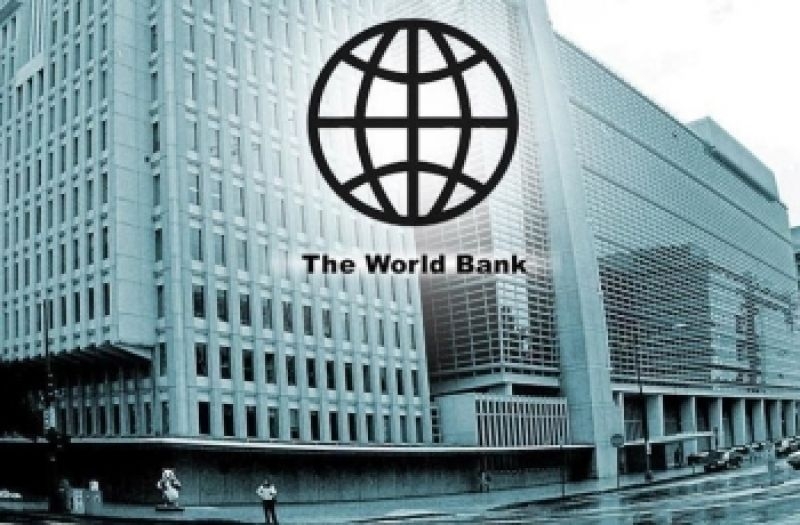- Saarc experts meet to reduce livestock-origin greenhouse gases |
- Bangladesh Mission in Delhi Suspends Visa Services |
- Another July warrier shot in head, critical in Khulna hospital |
- NCP Khulna Chief Critically Shot Amid Rising Political Violence |
- Indian MP Warns Bangladesh Faces Rising Lawlessness |
Growth Stabilizing But at a Weak Pace: World Bank
Global Economic Prospects 2024

World Bank
Global growth is projected to stabilize at 2.6 percent this year, holding steady for the first time in three years despite flaring geopolitical tensions and high interest rates. It is then expected to edge up to 2.7 percent in 2025-26 amid modest growth in trade and investment. Global inflation is projected to moderate—but at a slower clip than previously assumed, averaging 3.5 percent this year.
Given continued inflationary pressures, central banks in both advanced economies and emerging market and developing economies (EMDEs) will likely remain cautious in easing monetary policy. As such, average benchmark policy interest rates over the next few years are expected to remain about double the 2000-19 average. Despite an improvement in near-term growth prospects, the outlook remains subdued by historical standards in advanced economies and EMDEs alike.
Global growth over the forecast horizon is expected to be nearly half a percentage point below its 2010-19 average pace. In 2024-25, growth is set to underperform its 2010s average in nearly 60 percent of economies, representing more than 80 percent of global population and world output. EMDE growth is forecast to moderate from 4.2 percent in 2023 to 4 percent in both 2024 and 2025.
Prospects remain especially lackluster in many vulnerable economies—over half of economies facing fragile- and conflict-affected situations will still be poorer by the end of this year than on the eve of the pandemic. Global risks remain tilted to the downside despite the possibility of some upside surprises.
Escalating geopolitical tensions could lead to volatile commodity prices, while further trade fragmentation risks additional disruptions to trade networks. Already, trade policy uncertainty has reached exceptionally high levels compared to other years that have featured major elections around the world since 2000. The persistence of inflation could lead to delays in monetary easing. A higher-for-longer path for interest rates would dampen global activity.
Some major economies could grow more slowly than currently anticipated due to a range of domestic challenges. Additional natural disasters related to climate change could also hinder activity. On the upside, global inflation could moderate more quickly than assumed in the baseline, enabling faster monetary policy easing. In addition, growth in the United States could be stronger than expected. Against this backdrop, decisive global and national policy efforts are needed to meet pressing challenges.
At the global level, priorities include safeguarding trade, supporting green and digital transitions, delivering debt relief, and improving food security. At the national level, persistent inflation risks underscore the need for EMDE monetary policies to remain focused on price stability. High debt and elevated debt-servicing costs will require policy makers to seek ways to sustainably boost investment while ensuring fiscal sustainability.
To meet development goals and bolster long-term growth, structural policies are needed to raise productivity growth, improve the efficiency of public investment, build human capital, and close gender gaps in the labor market.
Growth is projected to soften in most EMDE regions in 2024. In East Asia and Pacific, the expected slowdown this year mainly reflects moderating growth in China. Growth in Europe and Central Asia, Latin America and the Caribbean, and South Asia is also set to decelerate amid a slowdown in their largest economies. In contrast, growth is projected to pick up this year in the Middle East and North Africa and SubSaharan Africa, albeit less robustly than previously forecast. Harnessing the Benefits of Public Investment. Public investment can be a powerful policy lever in EMDEs to help ignite growth, including by catalyzing private investment. However, public investment in these economies has experienced a significant slowdown in the past decade. In xviii EMDEs with ample fiscal space and a record of efficient government spending, scaling up of public investment by one percent of GDP can increase output by up to 1.6 percent over the medium term.
Public investment also crowds in private investment and boosts productivity, promoting long-run growth in these economies. To maximize the impact of public investment, EMDEs should undertake wide-ranging policy reforms to improve public investment efficiency— by, among other things, strengthening governance and fiscal administration—and create fiscal space through revenue and expenditure measures. The global community can play an important role in facilitating these reforms—particularly in lower-income developing countries—through financial support and technical assistance.
Fiscal Challenges in Small States
Weathering Storms, Rebuilding Resilience. The COVID-19 pandemic and the global shocks that followed have worsened fiscal and debt positions in small states. This has intensified their already substantial fiscal challenges—especially the need to manage more frequent climate change-related natural disasters. Two-fifths of the 35 EMDE small states are at high risk of debt distress or already in it, roughly twice the share for other EMDEs. Fiscal deficits in small states have widened since the pandemic, reflecting increased government spending to support households and firms, as well as weaker revenues. Comprehensive fiscal reforms are essential to address the fiscal challenges confronting small states. First, small states’ revenues, which are highly volatile, should be drawn from a more stable and secure tax base. Second, spending efficiency needs to be improved. These changes should be complemented by reforms to fiscal frameworks, including better utilization of fiscal rules and sovereign wealth funds. Finally, the global community can bolster funding for small states to invest in climate change resilience and adaptation, and other priority areas, including technical assistance in fiscal policy and debt management.

